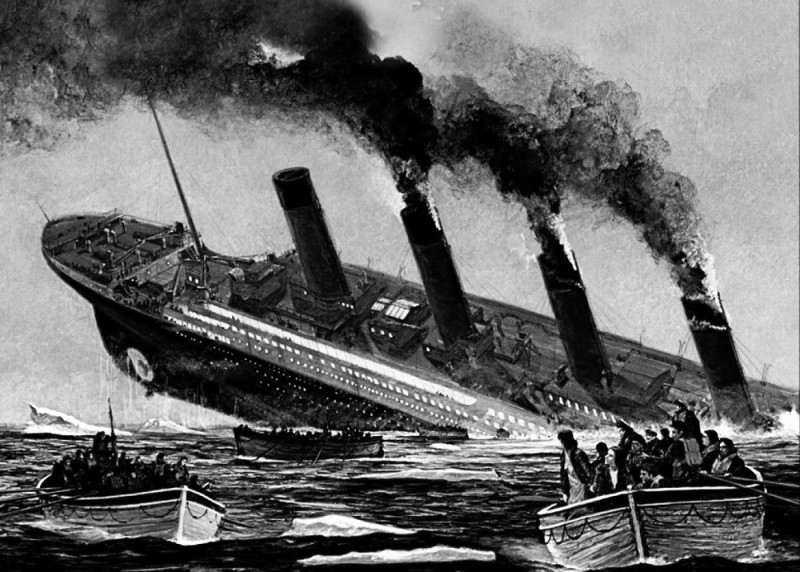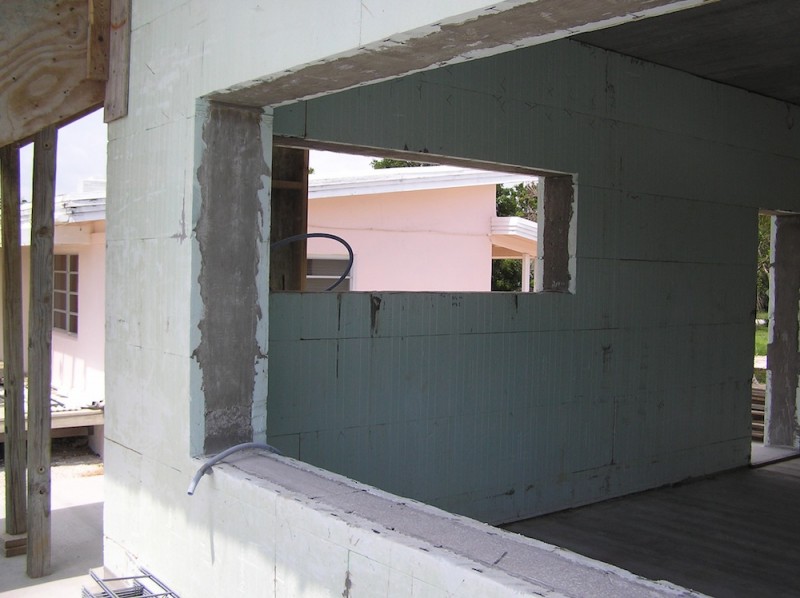City Council Debates Color of Deck Chairs On Titanic
Members of the Marathon city council recently debated whether there would be a cultural center or banquet hall in the planned $ 5 million (plus or minus) city hall. The new building will replace the current trailers that house city functions. And then, on Tuesday, Councilman Chris Bull moved that the city bring the old lens from Sombrero lighthouse “back to Marathon” and put it in the city hall, a very expensive proposal that will involve redesigning the lobby area and installing a humidity controlled room.
In all their discussions, the focus has been about money though Bull seems to have forgotten that.
“We’re building this one time and it’s for 50 years,” Vice Mayor Bull said.
Fifty years? What will the Keys be like in even 30 years? How much will sea water have intruded? Will there be drinking water from a water utility that is already at capacity even before the Keys add 3,500 homes over ten years and hundreds of hotel rooms. Will the Electric Coop lines still be intact? The council did not debate whether the building would be appropriate in five or ten or fifteen years when there could be water shortages, large power cost increases or even interruptions in power.
That’s if there is no catastrophic hurricane in the interim.
Nor are the members of the council particularly concerned about whether, on balance, the structure will substantially reduce the city’s contribution to greenhouse gases or if it will, as in the case of the city’s major white elephant – the central fire station – be an energy hog. This despite the city’s pledge to reduce greenhouse gas emissions by 20 percent by 2020.
Pluses and minuses
The news about the plans for the city hall is not all discouraging. Fortunately, and surprisingly, the state requires that new buildings reduce the energy requirement by 20 percent below what the state code now requires. Twenty percent is significant and the plans take that into account.
Plus: The plan calls for spray foam insulation in the walls and ceiling to make the structure as energy efficient as possible.
Minus: Builders will use the very conventional Concrete Block Construction (CBS) to construct the walls. They could have chosen Insulated Concrete Forms (ICF) construction that many consider superior to stick built or CBS structures. ICF buildings are constructed with Styrofoam panels that are filled with poured concrete under pressure.
ICF buildings are extremely air-tight. No joints exist between walls, or walls and floors preventing conditioned air leaking from the interior to the exterior of the structure. Energy savings from reduced air infiltration are obvious when compared to the large amount of heating and cooling losses experienced in traditional construction.
An ICF structure can weather a tornado or hurricane virtually un-scathed. Currently used platform framing technologies consist of thousands of independent components, fastened together by mechanical means, creating hinge points of weakness throughout the building. Cast in place ICF design creates a continuous and unbroken structural shell which is far stronger than any wood structure.
So why isn’t the city specifying ICF construction? The primary reason for not using it is that contractors in the Keys don’t know how to do it. Really.
Plus: The roof will be metal and will be painted white. That means that it will reflect heat and reduce cooling costs significantly. White roofs can reduce air conditioning costs by 10 or 15 percent. In addition, all the water fixtures will be low flow and the toilets will be low volume.
Minus: While there will be gutters on the roof, the water will be directed away from the building and not used, even for landscaping. Installing a cistern under a new building is significantly cheaper than retrofitting a structure and a cistern for such a large building would provide nearly all the water used, particularly for toilets. Not installing a cistern shows a considerable lack of foresight but no one in officialdom has raised the issue.
There is no plan for dual flush toilets nor for waterless urinals, something Key Colony Beach has had for many years.
Plus: The building will have an advanced HVAC (air conditioning) that is computer-controlled with occupancy sensors. That means the AC should be off in rooms that aren’t occupied. The city wouldn’t even install a programmable thermostat in the trailers a few years ago because they didn’t want to spend $1500 on it.
Minus: The unit was originally supposed to have 26 zones for the AC but the latest plan calls for only five zones to save money. That means that some areas will be too cold and others not cold enough, depending upon who is in the zone and what temperatures make them comfortable. Again, the city had an opportunity to save money over the life of the building but chose the short-term solution.
Plus: The state mandates occupancy sensors for lighting so people don’t have to remember to turn off the lights in their office (which they often don’t). The current plan also calls for LED lights that use far less power than conventional bulbs and even the newer CFLs.
Minus: There is no minus if the city executes the current plan. LEDs and lighting sensors will keep power usage lower.
The Blue Paper was not able to reach landscape architect Elizabeth Newland to find out more information about her plans. The “plus” would be all native plants, which require very little watering once they are established, and shade trees to keep the building cooler. The “minus” would be exotic plantings and only palms that provide very little shade. The main fire station has these kinds of palms and the building’s top floors were described as being like a sauna in late summer.
The money the council is spending on decorative frou-frou would have gone a long way towards installing photovoltaic panels and solar hot water on the roof to ensure resilience against future outages or shortages. The city could also use that money to install a cistern to guarantee a source of water when Florida Keys Aqueduct Authority can no longer pump enough fresh water to the Keys. Designing a building for even ten or twenty years from now makes much more financial sense and foresight than the current design.
Ironically Councilman Bull was integral to the effort in 2007 to reduce the city’s energy consumption and made sure that the city was a member of ICLEI, the coalition of cities that aim to do that. He also helped the city’s Green Team move through the process of auditing that usage.
Now, seven years later, he’s more interested in lighthouse lenses.

